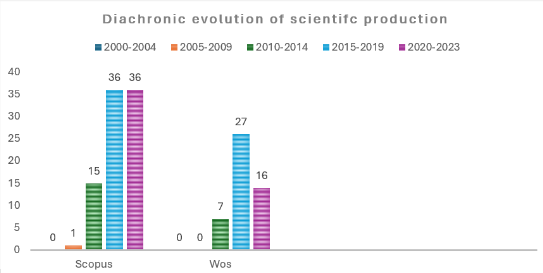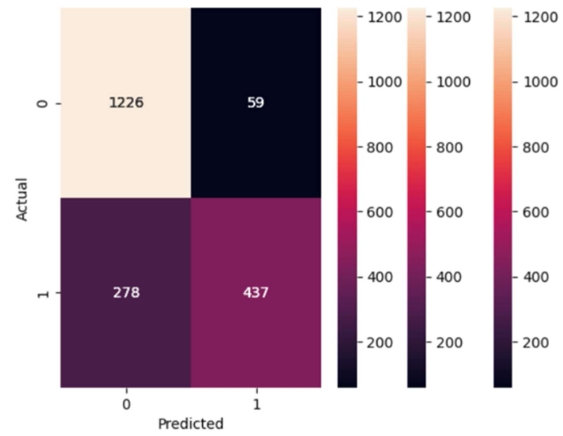The role of student motivation in integrating AI into web design education: A longitudinal study
Abstract
Amidst the current wave studies of artificial intelligence (AI) in education, this longitudinal case study, spanning Spring 2023 to Spring 2024, delves into the integration of AI in the UI/UX web design classroom. By introducing both text-based and image-based AI tools to students with varying levels of skill in introductory web design and user experience (UX) courses, the study observed a significant enhancement in student creative capabilities and project outcomes. The utilization of text-based generators markedly improved writing efficiency and coding, while image-based tools facilitated better ideation and color selection. These findings underscore the potential to augment traditional educational methods, providing students with novel avenues for creativity and innovation. At the same time, the goal of this study was also to ascertain the factors that led to the adoption of AI tools in the educational workflow, specifically focusing on student major and background, thereby illuminating how AI can be tailored to meet diverse educational needs and foster a more adaptive and innovative learning environment. The findings reveal that students were more receptive to integrating AI tasks into their workflows when these tasks did not directly relate to their major field of study. For example, Computer Science students exhibited less resistance to using AI for selecting color palettes, a task outside their primary focus, compared to utilizing AI for coding. Additionally, the study observed a significant growth in both awareness and usage of AI tools among students throughout the duration of the research. This trend suggests an increasing incorporation of AI technologies into their standard toolkit, highlighting a broader acceptance and integration of AI in educational practices.
References
[1]DelSignore P. The New Age of Creative AI Began in 2022. Available online: https://medium.com/predict/the-new-age-of-creative-ai-began-in-2022-ece07bb93350 (accessed on 10 January 2024).
[2]Ansari T. How AI Transformed the Art World in 2022. Available online: https://analyticsindiamag.com/how-ai-transformed-the-art-world-in-2022/ (accessed on 10 December 2023).
[3]Murphy B. Is Lensa AI Stealing from Human Art? An Expert Explains the Controversy. Available online: https://www-sciencealert-com.cdn.ampproject.org/c/s/www.sciencealert.com/is-lensa-ai-stealing-from-human-art-an-expert-explains-the-controversy/amp (accessed on 15 December 2022).
[4]Hazucha B. Artificial Intelligence and Cultural Production: Possible Impacts on Creativity and Copyright Law. SSRN Electronic Journal. 2022. doi: 10.2139/ssrn.4028106
[5]Ford M. Artificial Intelligence Meets Its Worst Enemy: The U.S. Copyright Office. Available online: https://newrepublic.com/article/170898/ai-midjourney-art-copyright-office (accessed on 3 March 2023).
[6]Francke E, Alexander B. The potential influence of artificial intelligence on plagiarism a higher education perspective. In: Proceedings of the European Conference on the Impact of Artificial Intelligence and Robotics (ECIAIR 2019); 31 October-1 November 2019; Oxford, UK. pp. 131-140.
[7]Sherry B. Limits to Artificial Intelligence’s Creativity (and How to Solve Them): Here’s what you need to know about harnessing A.I. technology to be more creative. Available online: https://www.inc.com/ben-sherry/3-limits-to-artificial-intelligences-creativity-and-how-to-solve-them.html (accessed on 17 March 2023).
[8]Ajani G. Human Authorship and Art Created by Artificial Intelligence—Where Do We Stand? In: Dreier T, Andina T (editors). Digital Ethics: The Issue of Images. Nomos/Hart; 2022. pp. 253-270. doi: 10.5040/9781509964154.ch-015
[9]Rosenberg. The De-definition of Art. University of Chicago Press; 1983.
[10]Mulholland N. Definitions of Art and the Art World. In: Exploring Visual Culture. Edinburgh University Press; 2022. pp. 18-33.
[11]Zhang C, Lu Y. Study on artificial intelligence: The state of the art and future prospects. Journal of Industrial Information Integration. 2021; 23: 100224. doi: 10.1016/j.jii.2021.100224
[12]Wellner G. Digital Imagination, Fantasy, AI Art. Foundations of Science. 2021; 27(4): 1445-1451. doi: 10.1007/s10699-020-09747-0
[13]Slotte Dufva T. Entanglements in AI Art. In: Global Media Arts Education, Palgrave Macmillan, Cham; 2023. pp. 181-196.
[14]Compton N. Generative art: the creatives powering the AI art boom. Wallpaper. Available online: https://www.wallpaper.com/art/generative-art (accessed on 10 January 2024).
[15]Lively J, Hutson J, Melick E. Integrating AI-Generative Tools in Web Design Education: Enhancing Student Aesthetic and Creative Copy Capabilities Using Image and Text-Based AI Generators. DS Journal of Artificial Intelligence and Robotics. 2023; 1(1): 23-36. doi: 10.59232/air-v1i1p103
[16]Bonadio E, Lucchi N. How Far Can Copyright Be Stretched? Framing the Debate on Whether New and Different Forms of Creativity Can Be Protected. SSRN Electronic Journal. 2019. doi: 10.2139/ssrn.3495223
[17]Anderson SL. The corporeal turn: at the intersection of rhetoric, bodies, and video games. Review of Communication. 2016; 17(1): 18-36. doi: 10.1080/15358593.2016.1260762
[18]Coeckelbergh M. Can Machines Create Art? Philosophy & Technology. 2016; 30(3): 285-303. doi: 10.1007/s13347-016-0231-5
[19]Mazzone M, Elgammal A. Art, Creativity, and the Potential of Artificial Intelligence. Arts. 2019; 8(1): 26. doi: 10.3390/arts8010026
[20]Tao F. A New Harmonisation of Art and Technology: Philosophic Interpretations of Artificial Intelligence Art. Critical Arts. 2022; 36(1-2): 110-125. doi: 10.1080/02560046.2022.2112725
[21]Ahmed D. Senses, experiences, emotions, memories: artificial intelligence as a design instead of for a design in contemporary Japan. Intelligent Buildings International. 2020; 14(2): 133-150. doi: 10.1080/17508975.2020.1764327
[22]Csikszentmihályi M. Society, culture, and person: A systems view of creativity. In: Sternberg RJ (editor). The Nature of Creativity—Contemporary Psychological Perspectives. Cambridge University Press; 1988. pp. 325-339.
[23]Jennings KE. Developing Creativity: Artificial Barriers in Artificial Intelligence. Minds and Machines. 2010; 20(4): 489-501. doi: 10.1007/s11023-010-9206-y
Copyright (c) 2024 Jason Lively, James Hutson

This work is licensed under a Creative Commons Attribution 4.0 International License.









